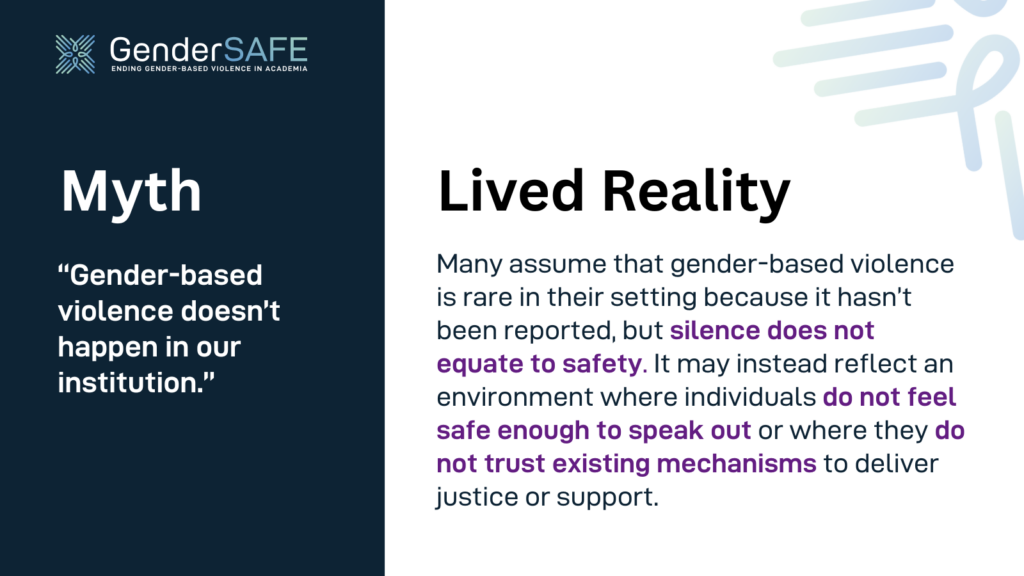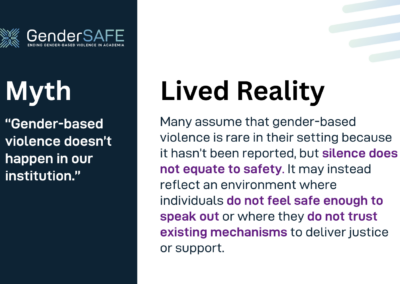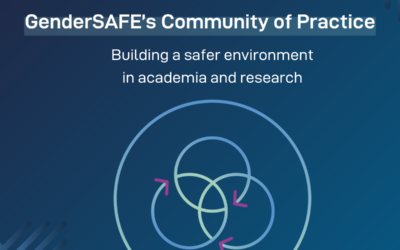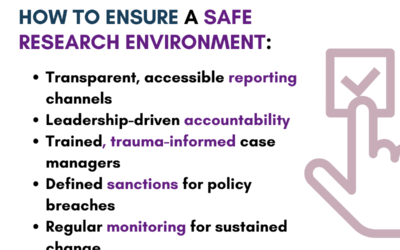When working to promote and implement effective responses to gender-based violence, change agents come across all sorts of resistances… This blog series aims to provide support by reframing arguments commonly encountered and help navigate challenging conversations with clarity, confidence and purpose. Drawing on the principles of strategic framing, this resource provides a better understanding and anticipation of common forms of resistance, as well as evidence-based, values-aligned messaging.
Argument #1: “Gender-based violence doesn’t occur in our institution”

Understanding the Resistance
Denying the presence of gender-based violence within an institution often reflects a lack of visibility rather than a lack of occurrence. Gender-based violence tends to be underreported in higher education and research institutions due to stigma, fear of retaliation, unclear procedures or mistrust in the institutional response. The absence of reports should not be mistaken for the absence of harm. In fact, silence can be a sign of an unsafe or unresponsive environment. Instead of framing the institution as immune, higher education and research institutions must frame themselves as committed to uncovering and addressing hidden harms. Proactive acknowledgement creates a culture of openness and positions the institution as a leader in safety and accountability.
This form of resistance often reflects fear of reputational harm, legal risk or institutional disruption. It may also be a mechanism to avoid discomfort or confrontation with cultural norms. Denial can be easier than investigation. Strategic framing helps shift this stance by offering a constructive, future-oriented message: that addressing gender-based violence strengthens the institution, rather than tarnishes it.
“We may not see it, but that doesn’t mean it isn’t happening. It means we need to look more closely.”
Institutional reframing
The UniSAFE prevalence survey (2022), conducted across 15 European countries and involving over 42,000 respondents, found that 62% of research and academic staff, students and administrative personnel had experienced at least one form of gender-based violence in their academic life. This includes psychological, sexual, economic and physical violence, as well as online harassment. Critically, a large majority of respondents indicated they had never reported the experience, either formally or informally.
These findings reinforce that gender-based violence is a structural and widespread issue in academia affecting individuals across disciplines, roles and institutional types. Silence or denial tends to reflect institutional blind spots rather than absence.
Insight from practice
Institutions that assume “this doesn’t happen here” risk failing those already affected. Recognising the problem is the first step toward credibility and prevention. Rather than positioning the institution as an exception, a more constructive frame is: “We are committed to uncovering and addressing gender-based violence, whether or not it has been reported yet.” This signals responsibility, care, and readiness for action. It also reframes safety not as a static state but as a continuous process requiring vigilance and engagement.
- “If no one is reporting, the question isn’t whether gender-based violence exists but whether people feel safe enough to speak.”
- “A safe institution is one that listens, especially when it’s hard.”
- “When cases become visible, it reflects victims/survivors’ trust in the system, not an increase in violence.”
Change agents can help create this shift by encouraging leadership to move from reactive denial to proactive transparency. They can facilitate internal conversations that highlight the gap between visibility and trust, and advocate for tools, such as anonymous surveys or self-assessment frameworks that help surface hidden realities and build institutional readiness.
Communicating with different stakeholders
- To leadership: Position acknowledgement of gender-based violence as a step toward transparency, compliance and ethical governance.
- To faculty/staff: Emphasise that recognition does not imply blame, but a shared commitment to care and prevention.
- To students: Ensure that your messaging communicates concern, safety and trust that the institution is ready to listen and act.




